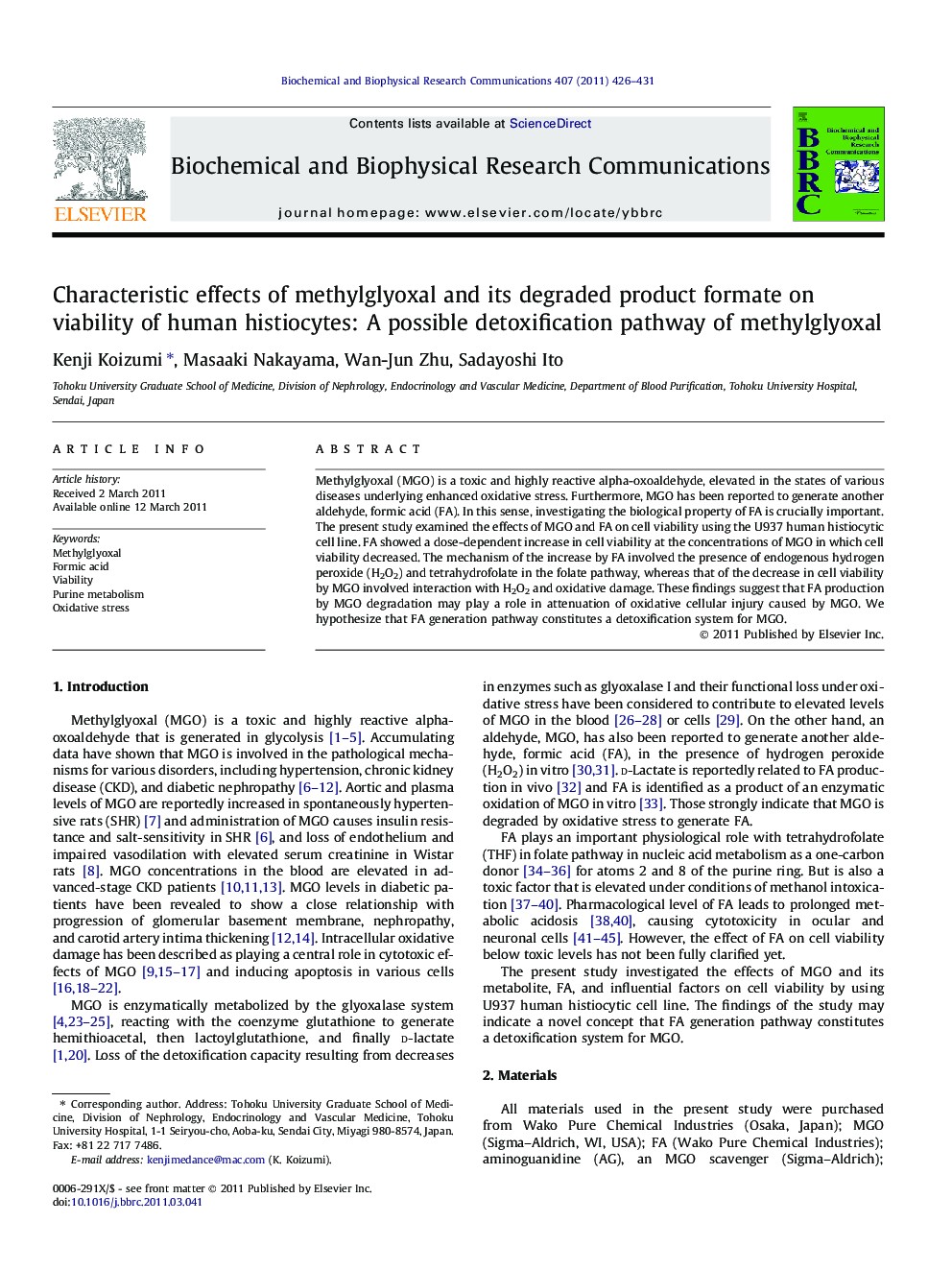| کد مقاله | کد نشریه | سال انتشار | مقاله انگلیسی | نسخه تمام متن |
|---|---|---|---|---|
| 1930833 | 1050531 | 2011 | 6 صفحه PDF | دانلود رایگان |

Methylglyoxal (MGO) is a toxic and highly reactive alpha-oxoaldehyde, elevated in the states of various diseases underlying enhanced oxidative stress. Furthermore, MGO has been reported to generate another aldehyde, formic acid (FA). In this sense, investigating the biological property of FA is crucially important. The present study examined the effects of MGO and FA on cell viability using the U937 human histiocytic cell line. FA showed a dose-dependent increase in cell viability at the concentrations of MGO in which cell viability decreased. The mechanism of the increase by FA involved the presence of endogenous hydrogen peroxide (H2O2) and tetrahydrofolate in the folate pathway, whereas that of the decrease in cell viability by MGO involved interaction with H2O2 and oxidative damage. These findings suggest that FA production by MGO degradation may play a role in attenuation of oxidative cellular injury caused by MGO. We hypothesize that FA generation pathway constitutes a detoxification system for MGO.
► Methylglyoxal is degraded to formic acid by oxidation.
► With endogenous hydrogen peroxide, methylglyoxal exerted oxidative cytotoxicity.
► Whereas, formic acid increased cell viability.
► Formic acid may counteract the methylglyoxal toxicity.
Journal: Biochemical and Biophysical Research Communications - Volume 407, Issue 2, 8 April 2011, Pages 426–431